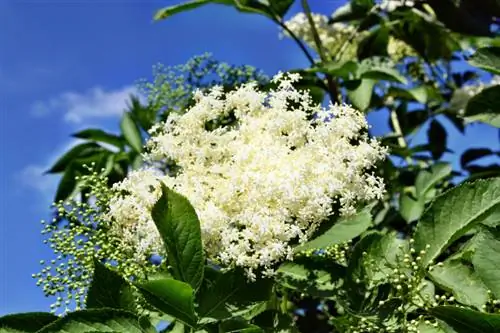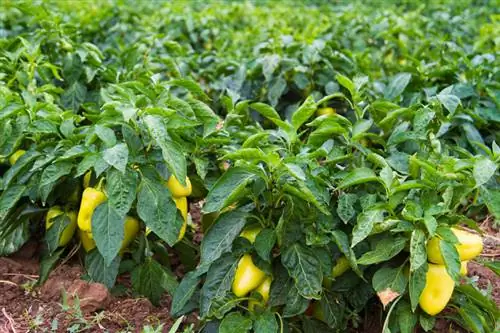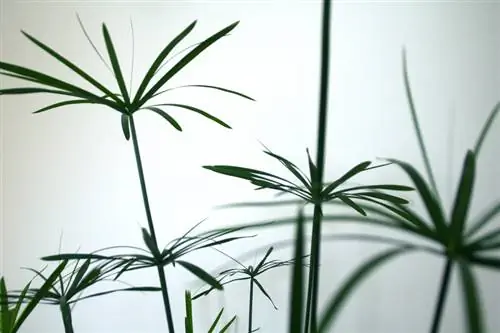- Author admin [email protected].
- Public 2023-12-16 16:46.
- Last modified 2025-01-23 11:20.
In order to propagate an elderberry bush, no extensive gardening experience is required. Even beginners can do it with cuttings. Sowing, however, is a little tricky. Here you can familiarize yourself with both methods.

How to propagate an elderberry bush?
To propagate an elderberry bush, cuttings or sowing are suitable. Cuttings are cut in summer, planted in lean substrate and kept moist. When sowing, cold germinators are used, which require pretreatment before they are sown.
Precise instructions for propagating cuttings
In midsummer, the elderberry bush provides the optimal starting material for propagation because the plant energy pulsates right into the shoot tips. As offshoots, only choose he althy specimens that are half woody and have several leaf nodes. A leaf node can usually be recognized by a thickening under the bark. The closer the distance between the leaf nodes, the more vital the cutting is.
- cut one or more cuttings with a length of 10-15 centimeters
- defoliate the lower half of the shoot
- halve the leaves of the upper half
- fill small pots with lean substrate, such as peat sand or standard soil
- Insert 1-2 cuttings each so that at least 1 node is still visible
The potting soil is pressed down so that no cavities form. After watering, it is advisable to put a plastic bag over each pot. Long matches act as spacers. Ideally, an indoor greenhouse (€29.00 on Amazon) is available. Rooting occurs quickly in a warm, partially shaded location. The substrate must not dry out during this time. A first shoot signals the successful course of propagation.
Care for cuttings properly until planting out
If the starting signal for propagation is given early in the summer, a young elderberry bush will have developed from the cutting by autumn. Provided with a strong root system, there is nothing wrong with planting this year.
If the young plant does not yet prove to be stable enough to overwinter outdoors, it will receive regular water until spring. Repeated transplanting into larger pots may be necessary. Commercially available potted plant soil can be used as a substrate. In addition, a dose of organic liquid fertilizer from March will boost your pupil to the point where it can be planted out from April/May.
This is how propagation works by sowing
In contrast to propagation through cuttings, breeding from seeds is a little tricky. The reason for this is that the seeds are cold germinators and, as berry seeds, are also provided with germination inhibition. Pretreatment is therefore required before the classic sowing work steps are carried out:
- Soak the seeds cleaned of the pulp for 1 day in 2 percent potassium nitrate from the pharmacy
- alternatively, let it soak in warm water for 48 hours
- fill a plastic bag with moist sand and the elderberry seeds
After this cold stimulus, the seeds are taken out of the refrigerator and sown in peat sand. At a constant temperature of 20 degrees Celsius, germination begins quickly.
Tips & Tricks
In order to promote the rooting of cuttings or seedlings, clever hobby gardeners spread a wafer-thin layer of compost on the bottom of the growing pot. The plants will work twice as hard to get the desired nutrients from their roots.






